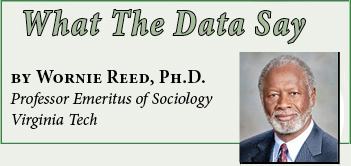 While some of us argued that football and basketball players at big-time programs should be paid, universities and the NCAA were continually hiding behind the student-athlete myth. We kept saying that the players were generating millions of dollars, while the NCAA and the universities kept saying these athletes were students and amateurs and should not be paid.
While some of us argued that football and basketball players at big-time programs should be paid, universities and the NCAA were continually hiding behind the student-athlete myth. We kept saying that the players were generating millions of dollars, while the NCAA and the universities kept saying these athletes were students and amateurs and should not be paid.
Walter Byers, the longtime head of the NCAA (National Collegiate Athletic Association), coined the idea of “student-athlete.” He was the first executive director, a post he held for 37 years – from 1951 to 1988. He developed the NCAA into the powerhouse of college sports.
Byers came up with the term “student-athlete” as the NCAA defended itself in a workers’ compensation claim by the widow of Ray Dennison, who had died in 1954 while playing football for Fort Lewis A&M in Colorado. His widow argued that college football was a full-time job and that state labor laws should cover her husband’s death.
Thinking the college amateur system would fall apart if schools were forced to pay workers’ compensation claims for athletes, Byers devised a strategy.
Byers and the NCAA lawyers argued that Dennison was a “student-athlete” participating in an extracurricular activity that just happened to be more dangerous than singing in the college glee club. The courts agreed with that argument, and the widow lost her suit.
Byers established the NCAA’s enforcement division and, in the name of amateurism, went after schools and coaches caught breaking the rules. All the while, the term “student-athlete” enabled the NCAA and the universities that were exploiting these athletes to receive significant sums of money.
In the 1940s, the NIT (National Invitation Tournament) was the preferred post-season tournament of college basketball teams. It was always held at Madison Square Garden in New York City, and participating schools liked the attendant publicity for their schools and athletic programs.
However, in the 1950s, under the steady hand of Walter Byers, the NCAA tournament began to be more appealing. The NCAA invited more teams to its tournament and paid their expenses. The NCAA was getting broadcasting revenue from college football, and the NIT could not compete, leading to March Madness’s development. The NCAA football contracts ended in 1985; however, the March Madness television revenue filled the gap.
The annual NCAA basketball tournament currently provides the NCAA with about $900 million per year from television contracts. The NCAA uses these funds to run the organization, pay conferences, and subsidize nonrevenue sports championships. After 2025, the television contracts – just for the tournament – will exceed $1.1 billion a year.
While still director of the NCAA, Walter Byers began acknowledging the need to pay players.
In an interview in 1984, Byers shocked the reporter by expressing a loosening hold on amateurism. He said, “You know, I’ve reached the point where I’ve started thinking about an open division [in college sports] to make it more, for want of a better word, professional.” After 30 years of defending amateurism, he was changing his mind.
• In 1997, Walter Byers published his autobiography, “Unsportsmanlike Conduct: Exploiting College Athletes.” As the title indicates, Byers admitted the problems he had helped create, expressing regret that modern college sports had become a bountiful commercial enterprise. He argued that the athletes should have the same rights as coaches and be able to sell their skills to the highest bidder.
• Strangely, Myers’s autobiography received very little publicity. Although the title was very provocative in 1997, national media outlets did not interview him.
• Nevertheless, Byers’ wish has come true. Athletes are now offering the services – above board – to the highest NIL bidder, causing problems in the administration of college sports. In future discussions, I will address some of these problems and the race effect.





